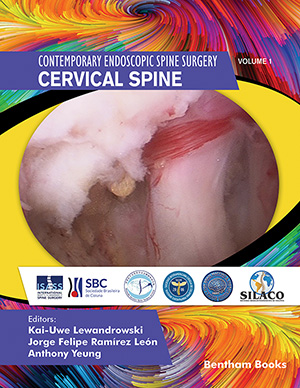Abstract
The authors describe the technique and clinical outcomes with the posterior endoscopic cervical spinal cord compression to treat cervical spondylotic myelopathy. A total of twenty-two cervical spondylotic myelopathy patients were treated with endoscopic spine surgery fusion from January 2015 to June 2017 at the Medical School of Chinese PLA. The operation time, intraoperative blood loss, and hospitalization stay were recorded and compared. Japanese Orthopaedic Association (JOA) scores before the operation, three months, and one year after operation were recorded and analyzed. There were twenty-two cases in the spinal endoscopy group. There were significant differences in preoperative JOA scores three months after surgery and one year after surgery. The JOA scores were significantly increased after surgery, and the symptoms gradually improved postoperatively. Clinical outcomes were Excellent in 81.8% of patients. The efficacy and safety of endoscopic spinal surgery for single-level cervical spondylotic myelopathy were established. The operation time, the intraoperative blood loss, and the hospitalization stay were reduced compared to historical numbers for competing decompression and fusion procedures.
Keywords: Cervical spondylotic myelopathy, Decompression, Gait imbalance, Laminectomy, Motion preservation, Non-fusion, Posterior cervical approach, Spinal cord compression, Spinal endoscopy, Upper motor neuron dysfunction.






















